Minds On
Satellites and climate change
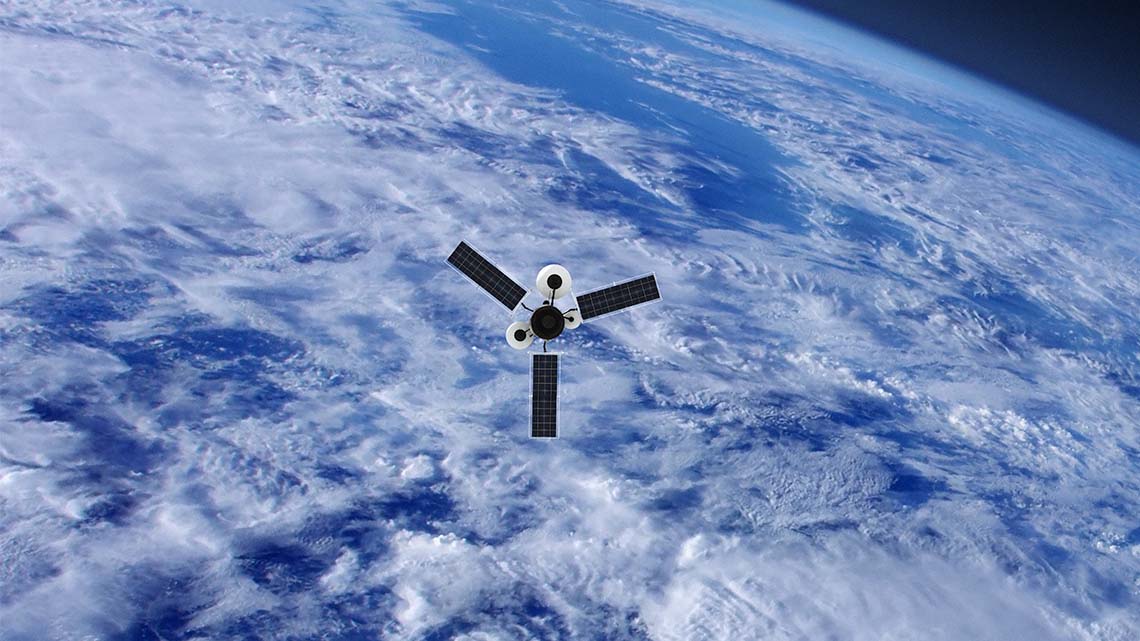
Satellites orbiting the Earth are used to monitor the Earth’s environmental conditions and help analyse climate change.
However, the money spent on space exploration has been criticized because there are vulnerable people on Earth who are in need and, space exploration is expensive and risky. Environmental concerns are also being raised about the carbon footprint with each launch into space.
Press ‘Definition’ to access an explanation of the term carbon footprint.
The term carbon footprint refers to the amount of carbon dioxide and other greenhouses gases that are released into the air as a result of human activity (not by nature). Just like a footprint in the sand, it is a mark that humans leave behind as a result of what they do.
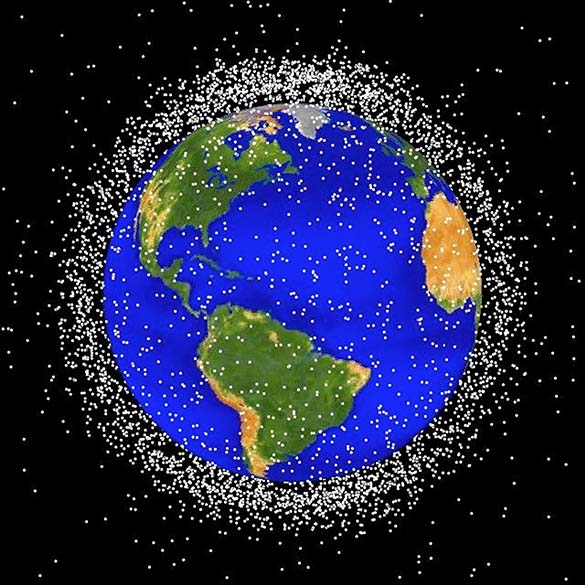
A graphic representation of the Earth from space, with over 150,000 pieces of debris represented as tiny specs floating all around the Earth’s surface.
As the idea and popularity of space tourism grows, many are wondering if these expensive trips to space are worth the damage to our atmosphere. There are also increased concerns over “space junk” and the old, often broken, mechanical parts and materials orbiting our planet. Recently, some of this debris has been a threat to astronauts working on the International Space Station and they have had to seek cover.
Do the benefits of the data we can get about climate change from satellites and other space experiments outweigh the effect that the launches have on the environment?
Some argue that space is just not a natural place for people to live – there are harmful radiation levels at times, no gravity, no air and being in space often involves extreme high and low temperatures.
Pause and Reflect
Consequences of space exploration
There are many different points of view to consider when it comes to the value of space exploration. Think about the following spectrum. Where do you stand? Check off the box that represents your personal view on space exploration then, using a method of your choice, record your thinking for why you chose the answer you did.
Action
To explore or not to explore?

What do different environmental and scientific experts have to say about space exploration? Let’s analyse the arguments for and against space exploration by tuning in to some Canadian experts.
As you explore, what are the most convincing arguments or ideas that stand out or influence you? Keep track of them using the following table or another method of your choice.
Complete the Space Exploration document in your notebook or using the following fillable and printable document. If you would like, you can use speech-to-text or audio recording tools to record your thoughts.
|
Benefits |
Consequences |
What did I find interesting? |
|---|---|---|
Press the ‘Activity’ button to access Space Exploration.
The case for space exploration
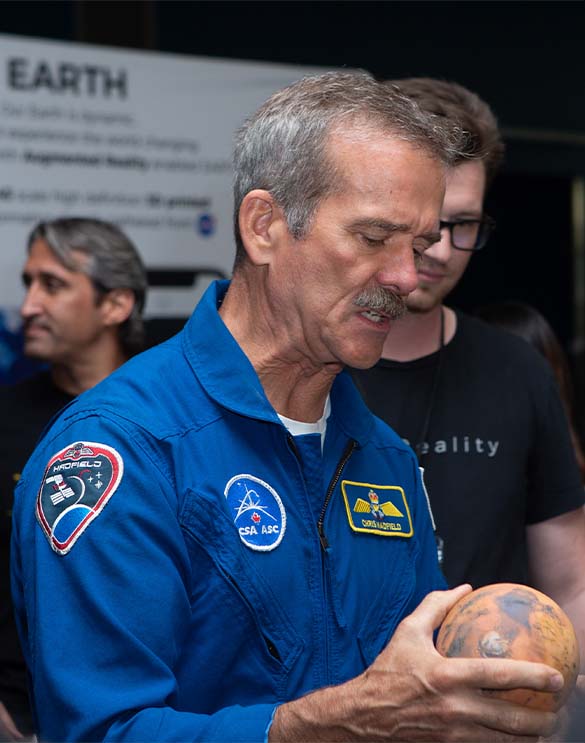
Colonel Chris Hadfield is a veteran Canadian astronaut and advocate of space exploration and education. In an interview with Tested’s Adam Savage, Colonel Hadfield shared his thinking on the question “Why do we need a space program?” The following are some of the points Colonel Hadfield shared on the topic:
Having a space program is worthwhile because of the direct benefit of better understanding the Earth itself. Astronauts can examine our planet through observatories that are built for specific purposes.
The following are some of the things we can learn from experiments that are being run at some of these observatories:
- long-term changes in the surface of the earth
- changes in temperature in the atmosphere
- how flame spreads and moves
- the forces, properties, and interactions of different fluids
Space exploration is important because it helps to advance our current technology. Space travel is a direct result of the human race’s quest to understand the universe better. The challenge of space exploration can inspire younger generations to learn more and pursue a career in this fascinating field.
The case against space tourism
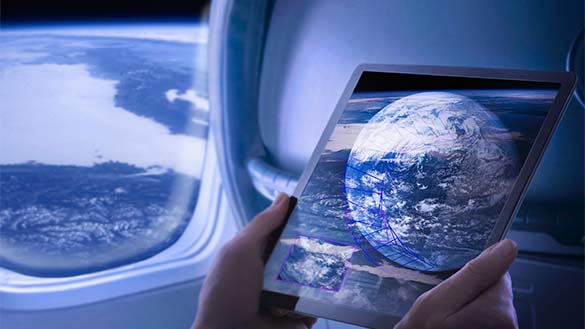
Image of hands holding a tablet that shows planet Earth with unknown stats labelled on it. The person is sitting next to the window of a spacecraft with the horizon of space and Earth serving as the backdrop out the window.
Space tourism is another form of exploration. It is being developed by private companies, mostly independently of space agencies like the CSA or NASA.
For example, billionaire Amazon founder Jeff Bezos has recently taken his first space tourism trip for fun. Commercial space tourism will allow people to experience extraordinary views between outer space and Earth. Passengers will also get to experience a few minutes of microgravity where they can bounce around the spacecraft weightlessly because of the weakened force of gravity.
There are two types of flights so far that commercial space tourism will allow, though a person must pay millions of dollars to do so. The following two flights have only been able to reach suborbital space, and that is not exactly new to science because these flights do not orbit around the earth.
- The Virgin Galactic flight is where passengers will go approximately 53 miles above sea level.
- Blue Origin passengers will go approximately 62 miles above sea level.

These types of commercial space tourists get to experience something they have called “The Overview Effect” because passengers get to travel just past the boundary between space and Earth. Currently flights are only between about 10 to 90 minutes long.
There are other billionaires, like Jared Isaacman, who is paying for a flight vessel called “Inspiration4” that will be spending a lot longer orbiting around the earth. Jared’s company, called Shift4 Payments, also has plans to fund private missions onto the International Space Station and even a trip around the moon.
Did You Know?
Did you know?
The very first suborbital flight happened in 1961 with NASA astronaut Alan Shepard successfully launching into space. The suborbital flight was only 15 minutes long!
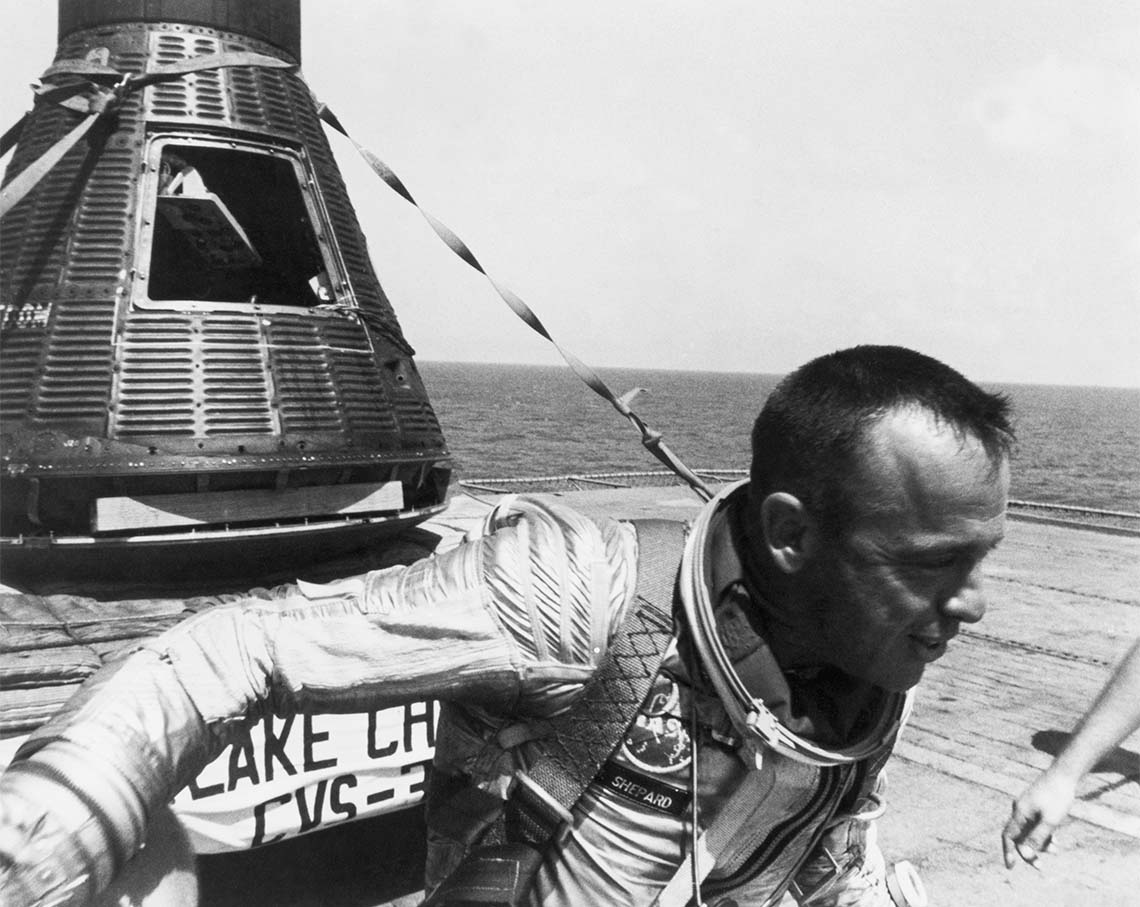
Alan Shepard exiting the Freedom 7 capsule.
Aside from space tourism, suborbital flights offer the possibility for scientific experiments to be conducted to better understand Earth life and improvements that can be made on our own planet. An example of a study being conducted on suborbital flights are how plants respond to microgravity.
Private suborbital space flights are not yet very common because the overall risks are still not clear. It has been suggested that one way to offset some of the risks, is for people who are taking part in space tourism to complete some sort of mandatory training so that they can be prepared for the effects of space flight. The intense force of gravity on the human body can feel like six times your body weight and lasts in an orbital flight anywhere between 20 to 30 seconds.
What about space pollution?
The carbon footprint of launching vessels into space causes very high emissions, approximately 100 times more than an airplane flight does. If space tourism becomes more popular, that could get even higher! What complicates studying the exact degree of pollution commercial space flight may cause, is that it depends on certain factors like the type of fuel used as well as the energy it takes to manufacture that same fuel and the soot that is released.
In a 2010 study, The Aerospace Corp. in El Segundo, California estimated that the soot produced by releasing approximately one thousand space tourism flights, could cause Antarctica to warm by almost one degree Celsius (Staff, 2010).
Pause and Reflect
Pause and reflect
After exploring all the information, has your opinion about space exploration changed at all?
Revisit the following checklist that you completed in the Minds On section and adjust, or don’t adjust, your opinion as necessary. Using a method of your choice, record any new thinking or any information to further support your initial decision.
Consequences of space exploration
Consolidation
State your point of view

Where do you stand on whether or not humans should continue to explore space?
Revisit and complete the Space Exploration table from the Action section in your notebook or using the following fillable and printable document. If you would like, you can use speech-to-text or audio recording tools to record your thoughts.
|
Benefits |
Consequences |
What did I find interesting? |
|---|---|---|
Press the ‘Activity’ button to access Space Exploration.
Next, using the format of your choice, and the information you recorded in your table, compose a persuasive piece for a Canadian Astronaut, the Canadian Space Agency or a newspaper opinion section detailing your opinion on the following question:
Is space exploration worth the large amounts of money that is spent on it?
You could choose to create a blog article, podcast episode, letter or a video recording outlining your thoughts and arguments.
Whatever format you choose, make sure to state your opinion as clearly as possible and include the following:
- multiple points of view in your arguments
- researched new and relevant points of view that favour your opinion
- quotes and facts from reliable and reputable sources of information
- images to enhance your ideas (where appropriate)
- a strong conclusion to summarize your opinion
Press ‘Research tips’ to access information to help guide you in finding reliable and reputable sources of information.
Thinking critically about research
When researching, it is important that you begin your search using websites, videos, audio recordings, or print resources from sources that would have reliable first-hand knowledge of the topic you’re researching.
Websites ending with .com, .org, and .net can be created and used by any person. Be careful when using these websites and ask yourself if these websites are credible or have bias. Those ending in .org are usually used by non-profit organizations, which may have an agenda of persuasion rather than education.
Websites ending in .edu are reserved for colleges and universities. Canadian websites have a .ca ending. It is important to consider using credible Canadian websites for research when possible!
Reflection
As you read through these descriptions, which sentence best describes how you are feeling about your understanding of this learning activity? Press the button that is beside this sentence.
I feel…
Now, record your ideas using a voice recorder, speech-to-text, or writing tool.